Text
Osomatsu-kun Hachamecha Gekijou Review
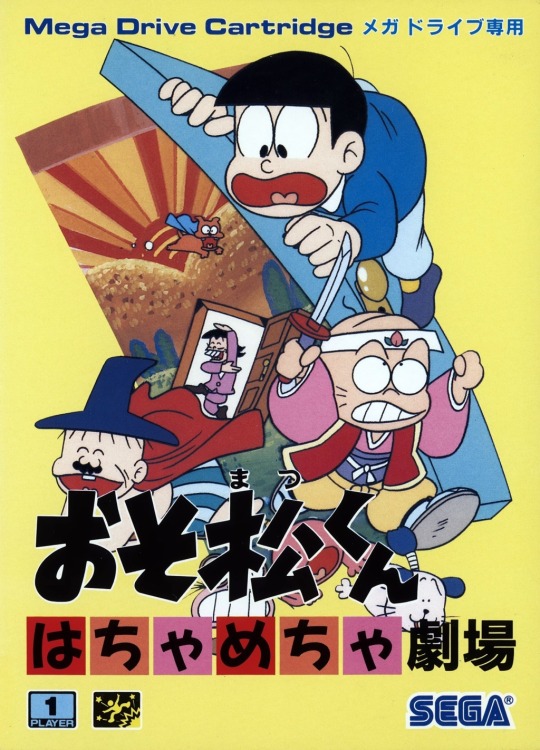
(Author’s warning: the following game contains racially insensitive stereotypes. They are not present in these screencaps, and are not the effect of the game’s relatively low score. The game is a product of its time not just on a technical level, but on a cultural level. If you choose to read this review, massive spoiler alert: this is just not a good game, no matter how you slice it.)
In Japan, the Mega Drive debuted in October of 1988 with a whopping two titles available at launch; Space Harrier 2, and Super Thunder Blade. It wouldn’t take long for the humble 16-bit console to get its third title, a licensed game based on the Osomatsu-Kun manga which was about to get a new anime adaptation thanks to its popularity coming back. So you’re probably thinking this is a cheap cash-in title designed to promote the new anime, and I would like to say you’re right, but... actually, no, you’re right. Osomatsu-Kun Hachamecha Gekijou (Little Osomatsu: Nonsensical Theater) is a cheap cash-in that does more harm than good for the Mega Drive.
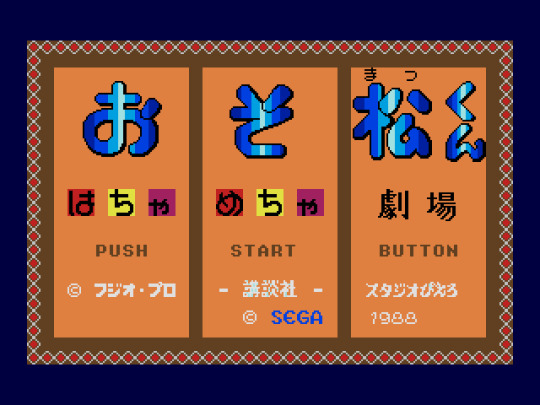
Before we dive into this game, let’s talk about Osomatsu-Kun itself. Osomatsu-Kun was a hugely popular manga about a group of trouble making sextuplets, who just so happen to all look the same. The manga ran for a whopping seven years back in the 60′s, receiving an anime adaptation at the peak of its popularity in 1966. In 1988, Studio Pierrot would bring forth a new anime adaptation that would see the sextuplets as side characters, with characters Iyami and Chibita, and their misadventures becoming more of the main focus. So seeing the side characters get thrust into the spotlight because they become popular is definitely nothing new, especially when the original manga did the same! So now that we have a new anime adaptation on the way, what are we getting for our video game cash in?

Well... just look at it. I know Japan is notorious for making some pretty surreal stuff, but Osomatsu-Kun Hachamecha Gekijou takes the fucking cake. You play as the oldest of the six brothers, and go on a quest to... uh, you know, I don’t think this game really has much of a story to it. You go through three different stages trying to get from point A to point B while you, armed with a slingshot, take out enemies based on other characters in Osomatsu-Kun, a lot of them being Chibita. And yes, you heard right, this game is only 3 stages long, so it should be quick and easy, right? Well... sit down, this game pads itself out in the worst possible way, and it managed to piss me off.
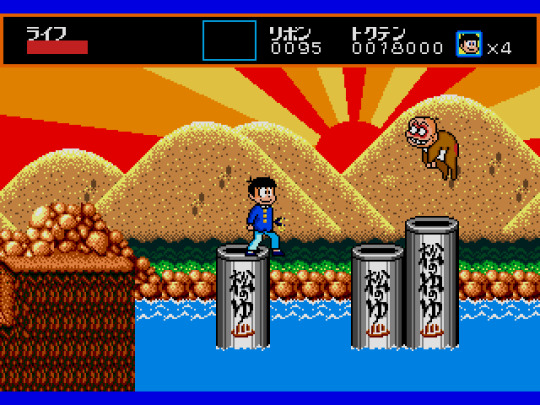
As you progress through a level, you may think it’s as simple as reaching the end of a stage... it’s not. Remember the infamous maze level in the Japanese Super Mario Bros. 2, or the one in Transformers Comvoy no Nazo? Well, there is a specific route you’re expected to take in this game, and it’s not clear. You’ll play this game going from point A to point B, but once you reach a certain point, the screen will just stop allowing you to move forward. You’ll see yourself before a pit, and think it’s instant death. In this game, it’s not death, it just leads you to a different part of the level. However, the path you need to take is cryptic as hell, and you’ll never know if you’re going the right way. The only way to find out is to take out the correct sub boss. When you do, you’ll see an intermission bumper like you would for anime, and you’ll ask yourself “Wait, am I just going through the first level again?” The answer is partially yes, because remember that point where the screen wouldn’t let you advance? Well, now you will see a platform show up that can take you to a new part of the level, but now you need to find a new path to get to point B. All of this is designed to pad the game’s extraordinarily short length. By short, I mean that if you know your way through all three levels, you can finish this game in about 15 minutes.
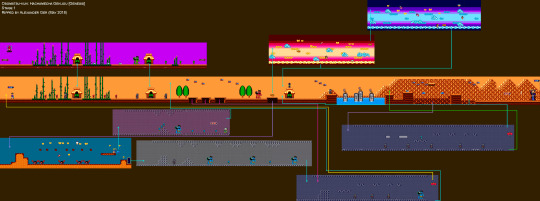
(Thank you to the person who put this shit together)
I’d be able to forgive the maze-like structure if the game was any fun to play, but as it stands, this is a painfully generic floaty platformer. By floaty I mean Osomatsu himself defies gravity by being able to float in the air for an extended period of time with his jump. It’s nice to be able to control his jump mid-air, but the weightlessness will more than likely mess up your precision platforming, or you’ll get interrupted by the mere touch of your enemies. Yes, when you take damage, you get stun-locked, and instead of just falling to the ground, you are stun locked mid-air. I could forgive it, but this game is once again, a 30 frames per second game, and almost feels like it’s been slowed-down intentionally. Another issue I take with this game is the difficulty, it’s way too easy. All enemy projectiles can be destroyed with your slingshot, and there’s enough distance between you and the enemy to have a pattern figured out easily. I guess the idea was because your slingshot has such a short range of attack, it would balance things out, but it really doesn’t. You’ll have plenty of lives and health to go up against the boss and sub boss as the game gets fairly generous with health powerups. There are also shops where you can buy some items to guide you with the ribbons you’re collecting along the way, but before you can access that you get the option of playing mini-games to gamble them away. I’d just skip these and go straight to the shop, it’s not like you need these power-ups that much anyway, you can beat this game without them.

On the visual side... this was the worst the Mega Drive had in 1988. Sure, it’s colorful, and the sprites evoke the spirit of the original manga, but this looks like a hold over from the Master System/Mark III, it just doesn’t impress me. Aesthetically, the game is fine for the most part, but eventually you’ll run into a few racial stereotypes for your enemies, and boy are they horribly insensitive. Even knowing this, I pressed on with the game, because I wanted to see if I could take something positive out of it and look past those enemy sprites, and about the only thing I find entertaining is Iyami being all the bosses. So aside from a few bad sprites, I find the graphics were more focused on aesthetics and functionality than pushing technical limitations early. Audio wise this game is just plain awful. There’s an old saying among video game music fans that only Japan could use the Mega Drive’s unique sound setup correctly, but if that’s the case, they’ve never listened to this game’s music. It’s obnoxiously loud, the sound effects are super scratchy, it feels too much like an assault on my ears compared to the sound effects on something like Curse, or even Taz-Mania. Nothing against the compositions themselves, I found two songs to be catchy, but otherwise, nothing stood out for the right reasons. Definitely not a keeper.

At the end of the day, Osomatsu-Kun Hachamecha Gekijou is shovelware of the highest honor. Even if you can endure the game’s painfully easy difficulty, and frustrating level layouts, you are left with a feeling of emptiness by the time you reach the end. This game will not so much break you, but it will leave you feeling empty and depressed as you say to yourself, “that’s it?” I certainly felt empty after playing this. Like I just lost about 20 minutes of my life, and I’ll never get it back. Is there much worse on the Mega Drive? Yes, but considering it was 1988, the console had nowhere to go from here but UP. I wouldn’t even think of recommending this today, even as a curiosity. This is one of those cases where I can say avoid at all costs
Positives
+ Aesthetics mimic the source material perfectly
+ Controls respond
+ The game’s translated subtitle “Nonsensical Theater” perfectly describes everything
Negatives
- Unnecessarily pads its length thanks to a cryptic maze structure
- Unacceptably short
- Insults your skill by being piss easy
- Racial stereotyping may be enough to turn you away
- Designed to cash in on Osomatsu-Kun’s returning popularity in the 80′s
- The game’s translated subtitle “Nonsensical theater” perfectly describes everything
- Audio will hurt your ears
- Unless you need to complete an actual Mega Drive collection... skip it.
- While taking screenshots, I somehow managed to unlock the game’s framerate, indicating that this game was deliberately programmed in assembly to play at 30 frames per second. The floaty mechanics actually handled better under 60 fps, no fucking joke. Do you believe this shit?
Overall: 2/10
5 notes
·
View notes
Text
Batman Review

What, you thought the NES was the only one to be graced with a Batman video game? Well, believe it or not, when Sunsoft’s name actually had some merit, they put out a few Batman games thanks to the movie license, and each one was a little different. The NES ran off with one of the best side scrolling license-based video games, the Game Boy got a decent side scroller, and the PC Engine got a... top down game where you literally clean up Gotham? That one is worth a review in itself, but we’re looking at the often overlooked Genesis game. Is this game really that bad that few people talk about it in Batman retrospectives? Absolutely not!

Sunsoft’s Batman on the NES is quite the crazy game, especially considering the liberties they took with the source material. What makes the NES game special outside of this was the attention to detail in the animation, the fantastic soundtrack, and the frantic action. Batman on the Genesis, is different. It takes a few liberties here and there, but moments you expect from the movie are here, such as the Boombox thug, Batman rescuing Vicki Vale, and also Batmobile and Batwing sequences. It’s doing things differently from the NES game by slowing things down a bit, and sticking a little closer to the source material. It’s doing a lot more different by changing up level designs completely to reflect locations featured in the movie, such as the Flugelheim Museum. As such, I find it unfair to compare it to the NES game versus style, as we’re dealing with two completely different fantastic beasts. Instead, we’re going to look at the Genesis version on its own merits, while discussing what the game is doing differently from the NES.
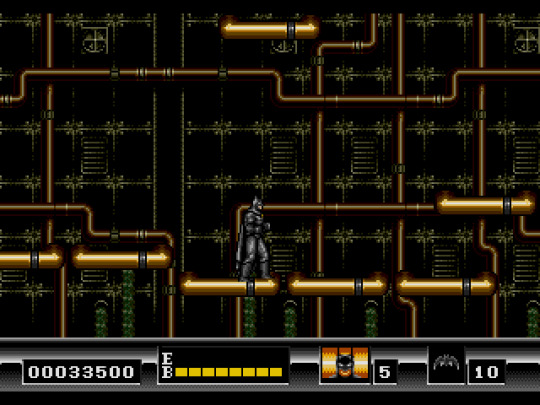
So what does Batman have going for it? Well, for starters, much like the NES game, you play as Batman, and punch out The Joker’s henchmen. They’re not all unarmed, as you deal with thugs toting guns, bazookas, axes, and swords. There’s even some fire breathing clowns! Each enemy has its own unique pattern of attack, which requires the player to have a certain sense of timing. Much like the NES game, Batman can either punch his way through enemies, or toss Batarangs at them, and here’s the first deviation in gameplay. Batman does not have a ton of gadgets here, instead relying entirely on Batarangs for a ranged attack. Unlike the NES game, Batarangs do not arc back towards Batman, they go in a straight line like shurikens do. They are not just effective on dealing with certain enemies from a long distance, they are very useful on bosses to make your life a little easier. There is a catch to all this, and that’s Batarangs are few and far between, as are health powerups. It’s going to take a little more skill than the NES game to survive as Batman. Batman also has the ability to do a mid-air somersault, which when used correctly doubles as an attack that is insanely useful against bosses. Be careful though, if you don’t time this right, you will either miss completely, or take damage in the process.
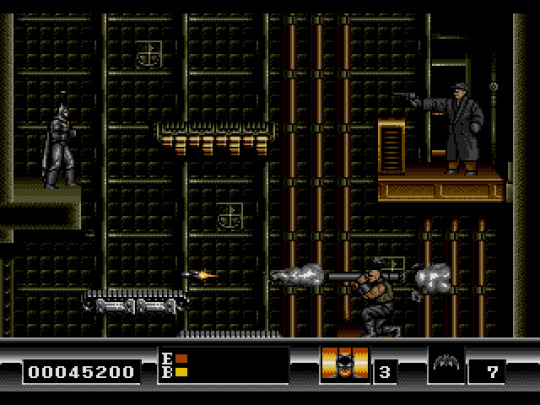
Compared to the NES game, which had punishing level design and boss fights, this game chooses to not only stick to those roots, but Sunsoft have chosen to turn things up a notch. See, Batman never starts at full health, instead, he always starts at half and with only 5 Batarangs. That’s right, for the first time, Batman didn’t have enough prep time to go against The Joker. This means that every time you die, you not only lose a life, but you’re back to half health, and 5 Batarangs. So those 30 Batarangs you went through the trouble of collecting will be gone completely. And believe me, you are going to be frustrated at times with the game’s insane level design, especially with the Flugelheim Museum and its amazing barrage of death traps.

Not only do you have to deal with falling chandeliers, but there are numerous gaps just waiting for Batman to fall down. While it sounds unfair, there is a way to deal with every situation here, and that is to have a sense of patience. You’re not on a time limit, and all your gun-toting enemies aren’t going to fire non-stop. They need to steady their aim before firing, so you have a window of opportunity to react accordingly. Another thing you don’t have is a checkpoint system, but instead, you just respawn where you died, unless you fell to your demise. Should you lose all your lives, only then will you be forced to start a whole level over. What it boils down to is to study the screen, and watch how enemies attack. Take patience, and nail the timing, and you will be ready to take on almost anything the game throws at you. It may not solve all the difficulty issues though. When you get to the last level, the game throws gun-toting thugs at you non-stop, and they not only stand and shoot, but crouch and shoot. Make sure you have Batarangs handy for the situation, and you should be prepared to deal with it. What you won’t be prepared for are the two vehicle levels.
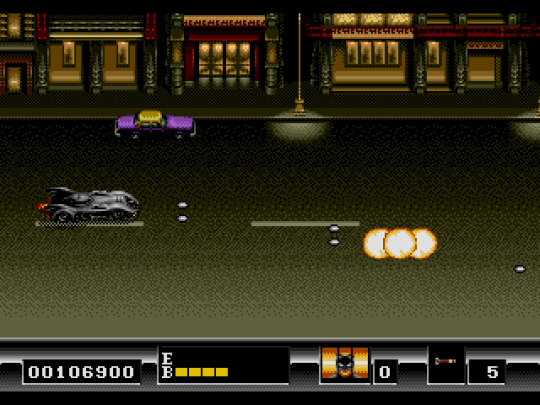
One of the complaints I had with the NES version of Batman when I was a kid, was no Batmobile level. Here, I get my wish, and in many ways, it’s both frustrating and enjoyable. For starters, there are no real power ups to collect here, instead you get standard health and ammo power ups that appear in both the top and bottom sections of the screen. Any Batarangs you collected up to this point are converted into missiles for the Batmobile and Batwing. The trouble is since the screen is scrolling fast and the health and ammo boxes are the same as regular levels, it is insanely easy to miss them, or even mistake them for an obstacle. This is also the only point in the game you will have a checkpoint system to deal with, but what makes this part more frustrating is that all enemy attacks will do two damage as opposed to one. Which means, you will die in two hits unless you are at full health. The Batwing sequence turns the difficulty up to eleven, as suddenly it turns into a bullet hell with heat-seekers coming every which way. In the Batmobile sequence, you can easily predict where projectiles are going to go, and have plenty of time to react accordingly. Yet despite this, as I played, I began to get a sense of a horribly unbalanced difficulty. I found myself dying too easy
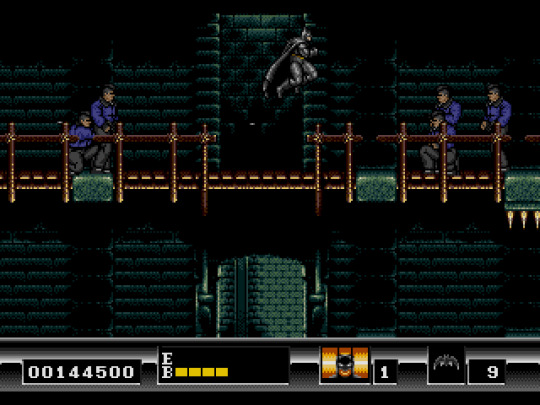
On the NES Batman had an aesthetic of using dark backgrounds with brightly colored sprites and platforms, giving off an almost comic-book feel. Here, the game wants to match the movie’s aesthetic, and the Genesis seemed to have the right color palette for Sunsoft’s goal. More importantly, there is a lot of attention to detail in the animations. The fact that Sunsoft decided that no animation should be spared is incredible, especially for something as simple as a thug steadying his aim. Only thing I’d maybe consider taking away is Batman’s haters gonna hate stride, it looks kind of goofy when you see him striding down the streets of Gotham. Also, I can’t stress this enough, much like the NES game, the audio is phenomenal. Just listening to the soundtrack, you’d almost forget you were playing a Genesis game, since most people associate the Genesis sound chip with nails on a chalkboard. The Flugelheim Museum has a great bassline, and the Batmobile and Batwing levels have the perfect high energy music for a shmup. However, it’s a little disappointing the sound effects department. Everything sounds just a little too quiet, save for Batman taking damage. Everything’s either muffled, or the music winds up taking over the whole show.

At the end of the day, Batman on the Sega Genesis is one criminally overlooked licensed game. While it can’t quite reach the same heights as its NES counterpart, there are things here the Genesis game does differently to allow it to stand on its own two legs. Had it not been for the unbalanced difficulty, this game would be a bit more enjoyable, but to the uninitiated, this game may feel like nonstop torture. Sunsoft did a solid job here, putting forth the best Batman game they could on the Genesis, and choosing to stick closer to the 1989 film classic. I wouldn’t want to imagine this in anybody else’s hands at the time. Batman on the Sega Genesis needs to be brought up more when discussing early Batman games as an example of what happens when a developer ends up delivering a different experience each platform.
Positives
+ Memorable soundtrack
+ Detailed Sprite animation
+ Batmobile level becomes fun when you get the hang of it
+ Does a great job following the movie
+ Death respawns you where you died rather than forced to a checkpoint as Batman
+ the parallax scrolling in the Batwing level is beautiful!
Negatives
- Unbalanced difficulty may leave you frustrated
- Batwing level does everything in its power to kill you
- Flugelheim Museum has too many death traps
- Underwhelming sound effects end up making the game feel less punchy
- Batman’s walk cycle
Overall: 8/10
23 notes
·
View notes
Text
Curse Review
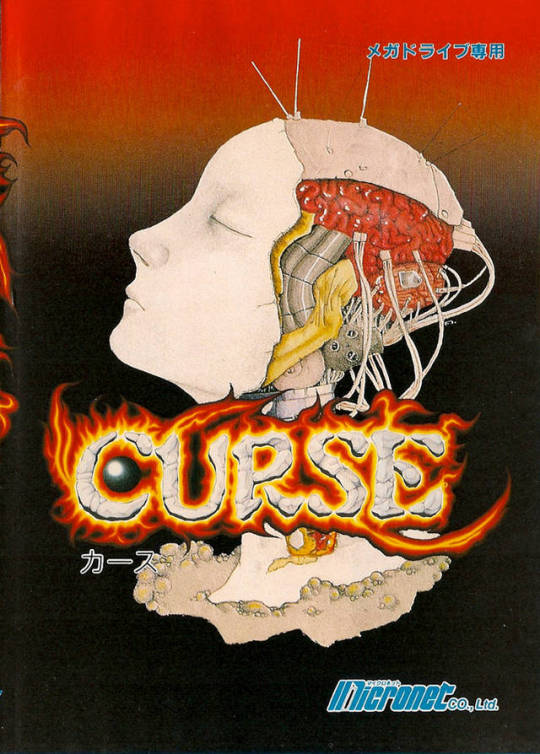
I make no claims that I am the greatest when it comes to the shoot-em-up (shmup from here on out) genre of gaming. Hell, I still have yet to find one I can beat on a single credit, but I’m always trying! What I find interesting about Curse is that it seems like the type of game that was designed with me in mind. It’s a more generous type of shmup. A simple, inoffensive game, nothing more to your average gamer. To the critics, it was a failure of a shmup that was destined for the bargain bin. For me however, Curse is a morbid curiosity. A shmup that seemed to be cursed upon its release, as its timing couldn’t have possibly been any worse.
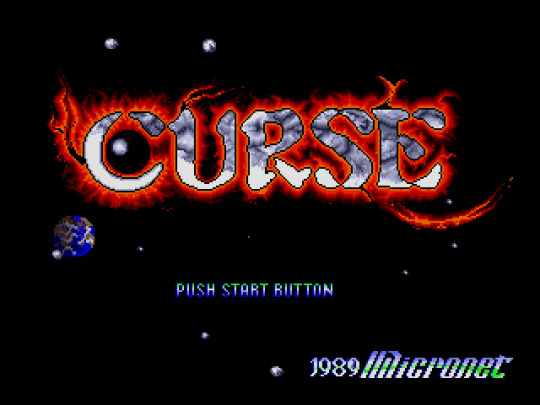
It’s December 23, 1989, Curse has just been released onto store shelves... right along side it, the very same day, was Sega’s Golden Axe. Sure, Curse caught your attention with its bizarre cover, but you knew Golden Axe was coming, you played it in the arcade, and wanted to play it at home. Curse, you had never heard of, and unless you had a PC in Japan, you would never know who these Micronet guys were. It gets worse as prior to Curse’s release, Technosoft began to forge its legacy with Thunder Force 2 and Herzog Zwei, and Toaplan had also shown up on the Mega Drive with Truxton. Curse needed to stand out, and it did... for all the wrong reasons.
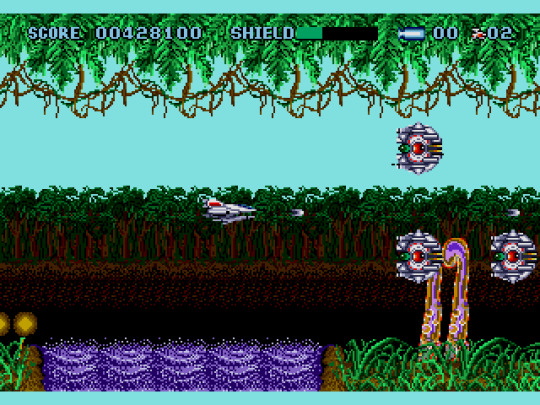
Curse is a 5 level, horizontal scrolling shmup that has all the basic elements you would expect in a shmup. Assorted weapons, optional turrets, and super bombs. When it comes to upgrading your weapons... there isn’t much to gain here. Each weapon does enough to behave differently, with one always being the most optimal choice. What Curse does offer you for turrets is you can have up to two of them, and you can change their position to either cover you from the sides, or top and bottom. Not necessarily a bad thing I would say, if it wasn’t for the fact that you rarely will ever get attacked from behind. It does act as a nice shield in case you are attacked from behind. Speaking of shield, that’s something Curse offers the player. A shield that can absorb damage and also enemy collisions. The shield is good to cover you for at least 3 shots or crashes before you die, but you’ll never be hurting for power in this game. Even if you go into this game underpowered, at lowest speed, you actually will find yourself with a fighting chance, but again, that shield will see to it this never happens. That shield, coupled with the game’s simple scoring, and ease of access is a blessing, and a curse.
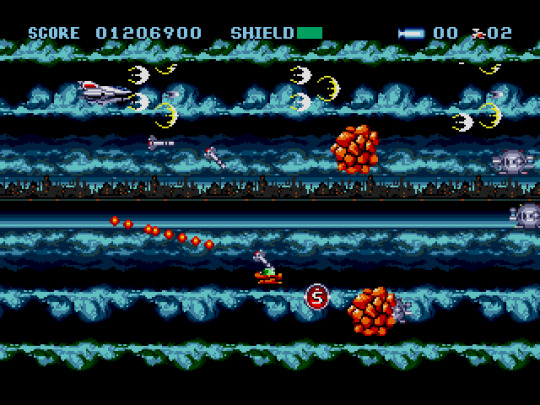
This is a shmup that is way too generous to the player. I don’t mean in the sense that it dumps power ups left and right, as any self-respecting shmup is going to give the player a something resembling a fighting chance. What I mean by it being generous is shield powerups are constantly being dropped, so as long as you don’t collide with a boss, or the environment itself, you’ll never be hurting to finish this game. In fact, after about 3 tries with Curse, I had finally managed to get to level 5 with the greatest of ease. Normally with a shmup, it’s all about memorizing enemy attack patterns, finding the best weapons to use, maximizing that weapon’s capabilities, rotating your turrets for optimal positioning, and using that super bomb when it gets out of hand. The existence of a shield becomes an excuse to miss attack patterns, as you’re most likely going to find plenty of shield drops in your quest. As if that weren’t enough, Curse was also generous in the extra lives department. In a shmup, getting an extra life is seen as rewarding, that you are doing so well in the game, but in Curse, it feels like the game is willingly giving itself up to you. It has made up its mind and surrendered. It isn’t until you get to stage 4, you feel this game is trying to challenge you by throwing as many possible projectiles it can from indestructible asteroids, to missiles and bullets. It’s the one time I felt this game was actually enjoyable, but sadly the game’s curse had already been setting in.
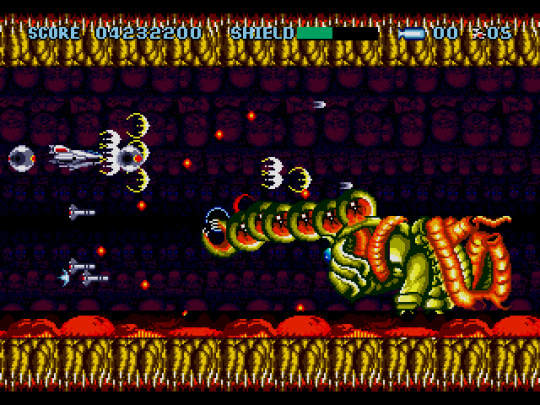
Now, I’d be willing to forgive Curse’s ill-fated existence if it at least felt good to play, but here’s where everything goes wrong for Curse. Remember how I mentioned Thunder Force 2, and Truxton? Well, those games played at a smooth, silky 60 frames per second. All good shmups play at 60 frames per second. This gives the player optimal control, and response time to the given situation. Why am I bringing this up? Surely Curse is running the same frame rate, right? Nope! Because Micronet decided to make use of parallax scrolling in the background, which unfortunately hinders the overall framerate of the game, dooming it to an abysmal 30 frames per second, getting close to 20 when the action gets too hot. This, unfortunately, makes you feel sluggish, even if you have your speed at max. If Truxton and Thunder Force 2 could manage hectic action without the framerate issues, what’s Micronet’s excuse? Because this was their first console outing, they probably didn’t realize until it was too late to reverse course on their desire for parralax scrolling. In terms of boss design, there are some odd choices of a boss, such as facing off against giant birds set out to kill you. As for the environments, they really don’t have that much memorable about them save for the final stage and its final boss, which I will not spoil. The final stage will really test your patience with the frame rate, especially because it’s the only level where death sends you back to the start. Consistency, please!
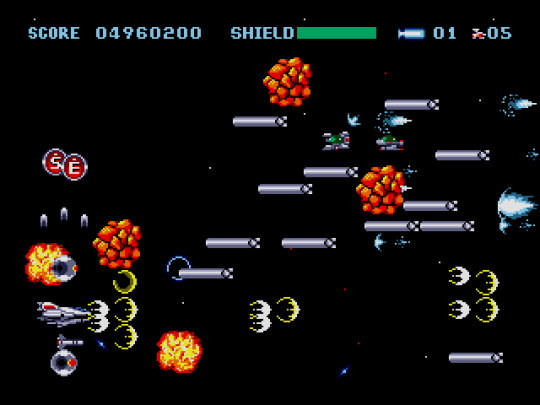
By this point, you’re probably saying “hey, Mr. Game Wise, is there anything about this game you genuinely like?” There is something about this game I genuinely like, yes! While the game may not be the best thing in the world, I will say I think for Micronet’s first outing on the Mega Drive, this game has one hell of a soundtrack. One thing a shmup needs to get right to make the player feel engaged is the music, and boy did it get my blood pumping, especially at the end. It felt like everything I had suffered through, the frame rate, the simplicity, the ease of access, that I was finally ready to tackle those who started this war with me. It’s a shame the sound effects couldn’t match that. As again, after playing Truxton prior to this, Curse feels like it needed more punch in sound effects, because when you shoot, there’s no sound effect! Maybe it was for the best as most of the sound effects in this game have that scratchy sound you come to expect from close to the bottom of the Mega Drive bin.
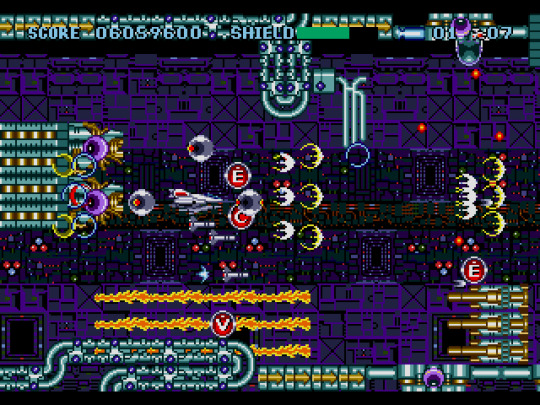
All that said, is Curse the worst game to come out of 1989? No. It’s arguably an inoffensive shmup that was victim to poor design choices, and some of the worst possible timing in the world. It was because of the poor reception in Japan that publisher INTV backed out of distributing the game in the United States. For Micronet however, this served as a learning experience, as two years later they would put out a fantastic port of the arcade classic Raiden to the Mega Drive. As for Curse, it’s at least playable, and if you need a shmup to get used to the genre, Curse will make it a little easy for you. If you’re a seasoned veteran of the genre, skip this one, it will offer you very little outside of the soundtrack.
Positives
+ The soundtrack
+ Box art
+ Late game levels actually deliver a balanced challenge
+ The Final Boss
Negatives
- Sluggish framerate
- Way too generous towards the player
- Stage 4 boss is too easy compared to others
- Significantly short for a shmup.
Overall: 5/10
9 notes
·
View notes
Text
Bokosuka Wars Review

Sometimes you will come across the defense of a game, or movie being ahead of its time. Usually this is another way of saying that the concept itself wasn’t bad, but it just wasn’t executed correctly. While this may be the case with Bokosuka Wars, there’s really no hiding the fact that it is, by far and large, one of the most unfair games to have ever been put onto a disk, cartridge, or otherwise. How bad could this be you ask?

Bokosuka Wars is a strategy game where you march your king 600 meters to defeat an evil king who has taken over your land. As you journey through 600 meters of treacherous hell, you will locate your pawns, and knights who have either been taken captive, or turned into a tree or rock. Simple as this sounds, navigating through Bokosuka Wars proves to even fail at the most basic tasks of movement. Yes, you move based on tiles, this game started its life on Japanese computers in 1983, and I’m willing to forgive this game for sticking with tile-based movement. What I won’t forgive is how unresponsive moving around the map is. You cannot move if you so much as tap the D-pad, you have to hold it down to start moving, and your movement is massively delayed as well. On the PC, movement was much faster than this, but here it feels like you move a tile every actual second, which means there’s a possibility that letting the D-pad go will cause you to move a tile when you didn’t intend.
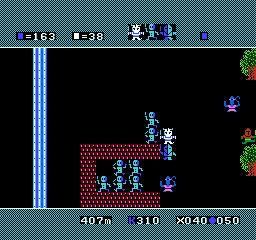
As your army grows, one thing you will notice is you control everything on, and off the screen. Your pawns and knights will move with you, even if you can’t see them. This may seem like a great idea, but it’s important to remember that if an allied soldier is blocked by an obstacle, you may never see them again. You could try and go back, but remember, as you’re moving back, so are they. Thankfully, you can select to move your king on his own, in case you want to try and get everybody back, or reposition yourself for optimal protection. You cannot do so with your pawns and knights, as they will move as a group. Couple this with obstacles, and you have a movement system that mostly works against you, but it’s not the only thing you need to worry about working against you.
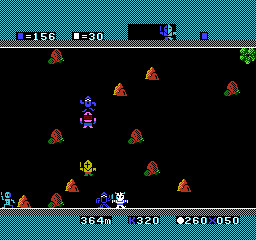
Along the way, you will encounter enemy forces, from mages, to killers, the whole works. The evil king doesn’t want to make your journey easy, and neither does the game itself. Being this is a strategy game, everything is about numbers. In terms of numbers, each class of unit in this game has a specific power level, and as you complete combat, it goes up. Knights and Pawns can be upgraded through experiencing combat, and as your king experiences combat, his power can grow into the 300s. So by this logic, you figure it’s best to reserve the stronger guys to deal with the weaker, but that’s not the case here. Bokosuka Wars has decided to be the kind of guy that will simply punch you in the nuts for having the expectation everything’s going to be smooth sailing. There is a random number generator working in the background that is giving the enemy an unfair advantage. Think of this as if you were playing a game of poker, you have a full house and your opponent has a pair of 3s, but you add a dice roll on top of that, and your opponent wins on the virtue of rolling higher than you, despite the fact that you had a winning hand. You feel cheated, and cry foul, and you will cry foul when your power 300 king loses to a power 10 grunt... or you’ll get a kick out of quite possibly the greatest Game Over screen in history.
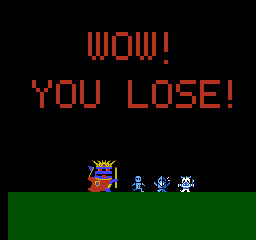
Even if you try to look past the unfair gameplay, you will see and hear something that is simply unacceptable for 1985. As previously stated, this was a 1983 PC game, so there was no reason they couldn’t give the audio and visuals a decent boost. Unfortunately, the game is like most 3rd party titles that were still in Japan at the time; underwhelming. The audio itself is nothing to write home about, sticking mostly to one channel for the music, and another for sound effects. The music in the game is too sharp, almost like somebody stabbed you in the ear, and as for length, it’s a 10 second loop that will get on your nerves rather quick. This is Hydlide NES before Hydlide NES is the best way to describe this mess.
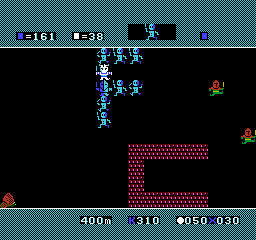
While the phrase “too far ahead of its time” applies to Bokosuka Wars, that only applies to its original 1983 release. ASCII and K. Sumii had plenty of time to try and make a new Bokosuka Wars game exclusive to the Famicom, but instead chose the easy way out and port the game over to the Famicom. By this port’s release, we had seen so much more out of the Famicom’s capabilities, making this an unacceptable port. While the game has fans who will try to defend it as some misunderstood child, Bokosuka Wars is difficult to defend unlike E.T. where the game makes sense when you learn how to play it. When you learn to play Bokosuka Wars, it doesn’t change the fact that the game is going to randomly screw you over.
Positives
+ Early Real-time Strategy
+ Game Over screen is worth a laugh
Negatives
- It’s a random number generator
- Ported 2 years later with no improvements
- Delayed movement controls for no reason
Overall: 2/10
9 notes
·
View notes